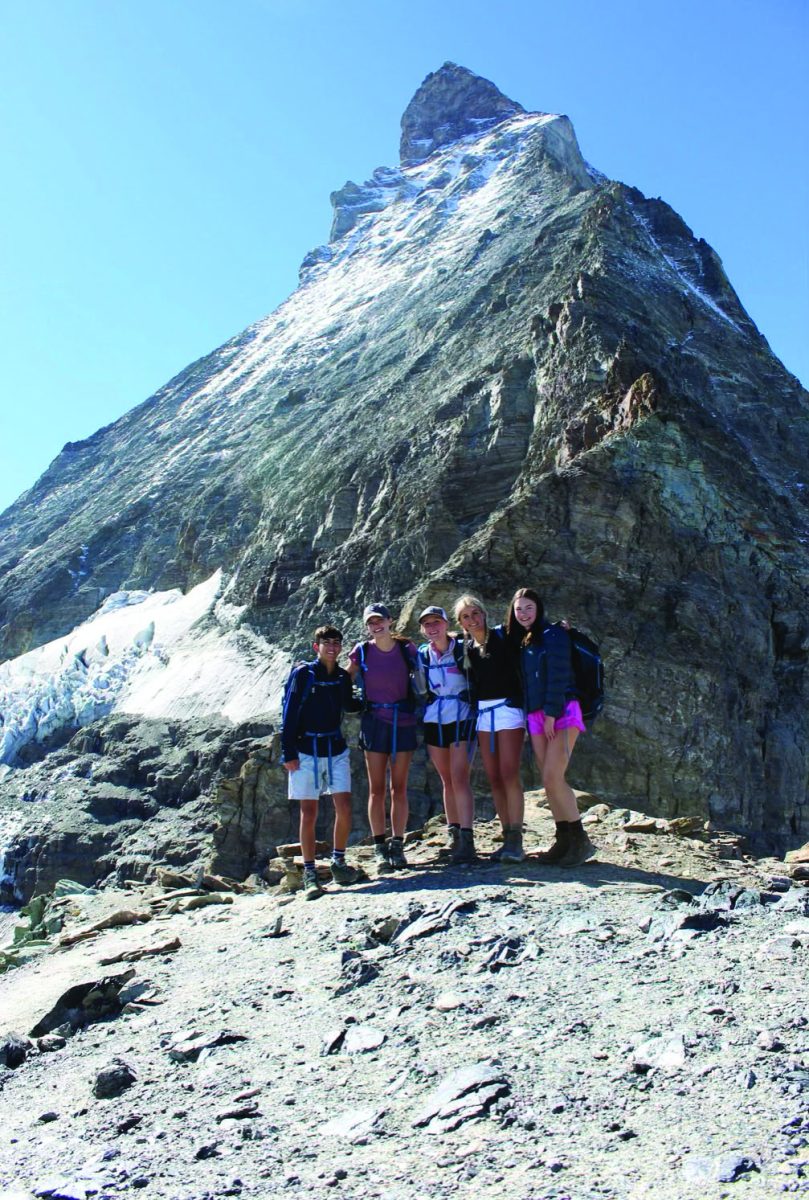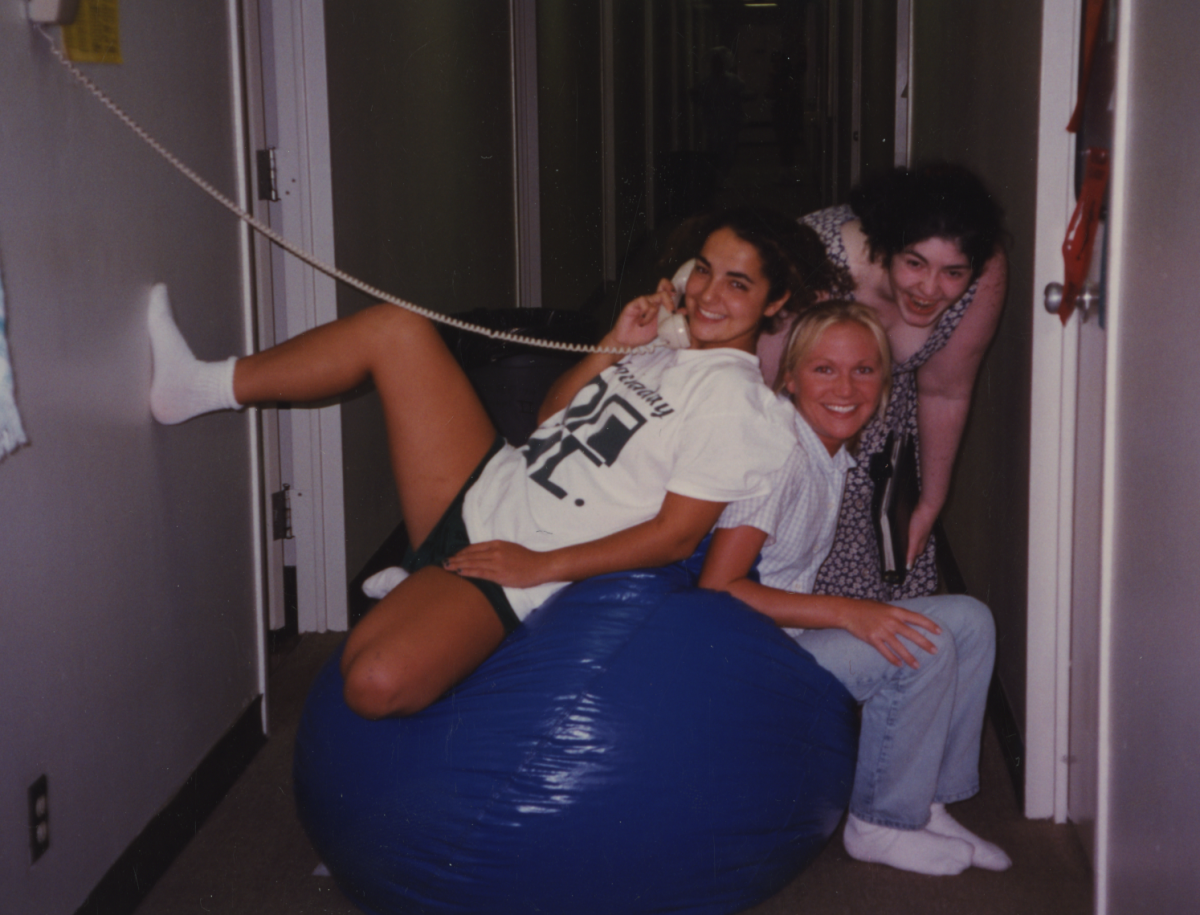 Under Fire: Women in the War Zone
Under Fire: Women in the War Zone
The United States Armed Forces bans female soldiers from engaging in ground combat. But as she rides in an armored vehicle on dirt paths riddled with roadside bombs, or patrols a city where behind every graffitied wall and in every narrow alleyway waits the threat of an ambush, a female soldier cannot say, “Stop! I’m a woman.”
The Afghanistan and Iraq wars, launched in 2001 and 2003 respectively, have been game changers for the United States Armed Forces. With over 230,000 female troops— more women serving overseas today than in all American wars since World War II combined— these two conflicts have particularly affected and expanded the role women play in war zones. They are wars without defined frontlines and with few individual battles, so women find themselves in ground combat situations despite the legal restrictions.
Previously, “if you were in combat, it was just because it was an accident, it somehow happened, but you weren’t allowed to be deployed into a combat situation,” says science teacher, Second Lieutenant Kirsten Lindsay, who served in the U.S. Army on a Reserve Officers’ Training Corps scholarship and then with the Corps of Engineers from 1992 to 1998. “‘In the rear with the gear’ is what that was called. But that has changed because the nature of warfare has changed.”
Women began serving in the field because Muslim customs required female soldiers in the field to search native civilian women at checkpoints. Typically, one or two women would be assigned to an all male unit as support troops, a defensive, rather than active role. These women play an integral role in securing the trust of civilians in both war zones where a female soldier’s discreet identifier, a tiny bun, serves as a sign of reassurance to the women she encounters.
In the central Iraqi city of Ramadi, from 2003 to 2004, The Lionesses, a group of women in the U.S. Army’s 1st Engineer Battalion, played an illegal but active combat role for the first time. Serving with the infantry, these women worked “outside the wire,” exchanging fire with the enemy alongside their male counterparts, according to testimonies on lionessthefilm.com.
But, despite instances like these, technology coordinator Lieutenant Colonel George Hanlon, who served as an infantry and staff officer in Iraq, says he went three months during his deployment without ever seeing a woman.
While he recognizes that there are situations in which servicewomen have to engage in combat, he doesn’t see female infantry members as logistically feasible.
“In advance to combat you’ll be carrying the average of about 100 pounds. That’s 100 pounds of gear that quite frankly, a female is going to have trouble carrying,” he said.
In addition to ground combat, women are also banned from Special Forces like the Navy SEALs. Deployed with the CIA in Afghanistan, history teacher Tracy Walder worked with a Navy SEAL unit “which was obviously all male” while stationed in Kabul. The units were tracking down a terrorist affiliated with al Qaeda.
According to Walder, although she was not working as a sniper in the mountains, she was “working with the Navy SEAL team doing the exact same stuff that they were doing.”
And, she more than held her ground. Working at night to avoid detection by the residents of the city, the unit searched the Kabul City jail where they believed authorities were holding the terrorist. The inmates would try to scare or spit on Walder and those she worked with when they stuck lanterns through the bars to check cells.
After arriving at the cell that they believed held the terrorist, Walder says, “none of the guys would [check the cell]; absolutely none of them. But I think I just had a gut reaction that this particular guy was in this particular cell because of the way the prisoners were behaving in that cell. And none of the guys would stick their head in there but, you know, I did, and I found him.”
Danger off the Battlefield
It is more likely for a female soldier to be raped by a fellow American comrade than to be killed by enemy fire. Nearly one-third of women deployed to Iraq suffer this abuse, according to California Representative Jane Harman. Frequently, the aggressors of harassment, assault and rape come from so many different levels of command that women have no superiors to whom they can report these infractions. In 2009, the Department of Defense estimated that 90 percent of rapes went unreported.
Even if a soldier chooses to seek help, she must face her attacker on a regular basis as they work and live together.
In contrast to these statistics, Lindsay’s experience with her male peers in the military was an overwhelmingly positive one. During her time at Boston University, she says it was rape from outside her group of fellow ROTC students that was a threat. Her male peers in training were protective, “almost brotherly,” she says.
In one instance “a group of [ROTC] boys actually went after a frat guy who had fairly brutally raped one of the girls,” Lindsay remembers.
Responding to instances of rape in combat zones, most bases now have rape kits on site. Most importantly, female soldiers have access to a confidential reporting system outside the chain of command that they can turn to for help, according to the Military Rape Crisis Center.
Not Just One of the Guys
Women in the military walk a fine line.
“You have to be feminine enough to not have men think that you’re just trying be one of the guys,” Lindsay says, “but you don’t want to be too feminine because then you’re too girly to do your job.”
There are obvious physical differences between men and women. Senior Clare Sakovich plans to enter a military academy in the fall. For the physical portion of her application, she had to complete 50 push ups and seven pull ups. Male applicants were expected to complete 80 and 20, respectively.
Even so, both men and women are expected to complete the same obstacle courses and the same workouts.
“When it ultimately comes down to it in the training grounds, I do think that I’ll have to be able to hold my own with the guys,” Clare says.
For some women, reconciling their femininity and the life of a soldier can be a challenge. Inventions like the GoGirl, a female urinary device shaped like a funnel that allows women to urinate standing up, have helped compensate for the physical challenges.
But what makes a woman a woman runs deeper than how she uses the restroom.
“A lot of women feel like they can’t truly be a woman in their job. And that needs to change,” says Walder.
As of December 2010, the Army allows new mothers to defer deployment for six months while the Air Force and Navy allow for a deferment of one year (the recommended duration for breast feeding).
Cadet Major Megan Hoskins ’07 recognizes how far women have come in the military, both in their achievements and in the eyes of their male peers. She has few complaints today.
“The women in 1976 [the first year women entered the Air Force Academy] had to overcome a societal norm, whereas it’s totally normal for me to attend USAFA and by extension be in the military. 30 years ago, those who supported women in the military were more scarce; today, those who don’t support the idea are the ones who are hard to find.”
—Caroline







